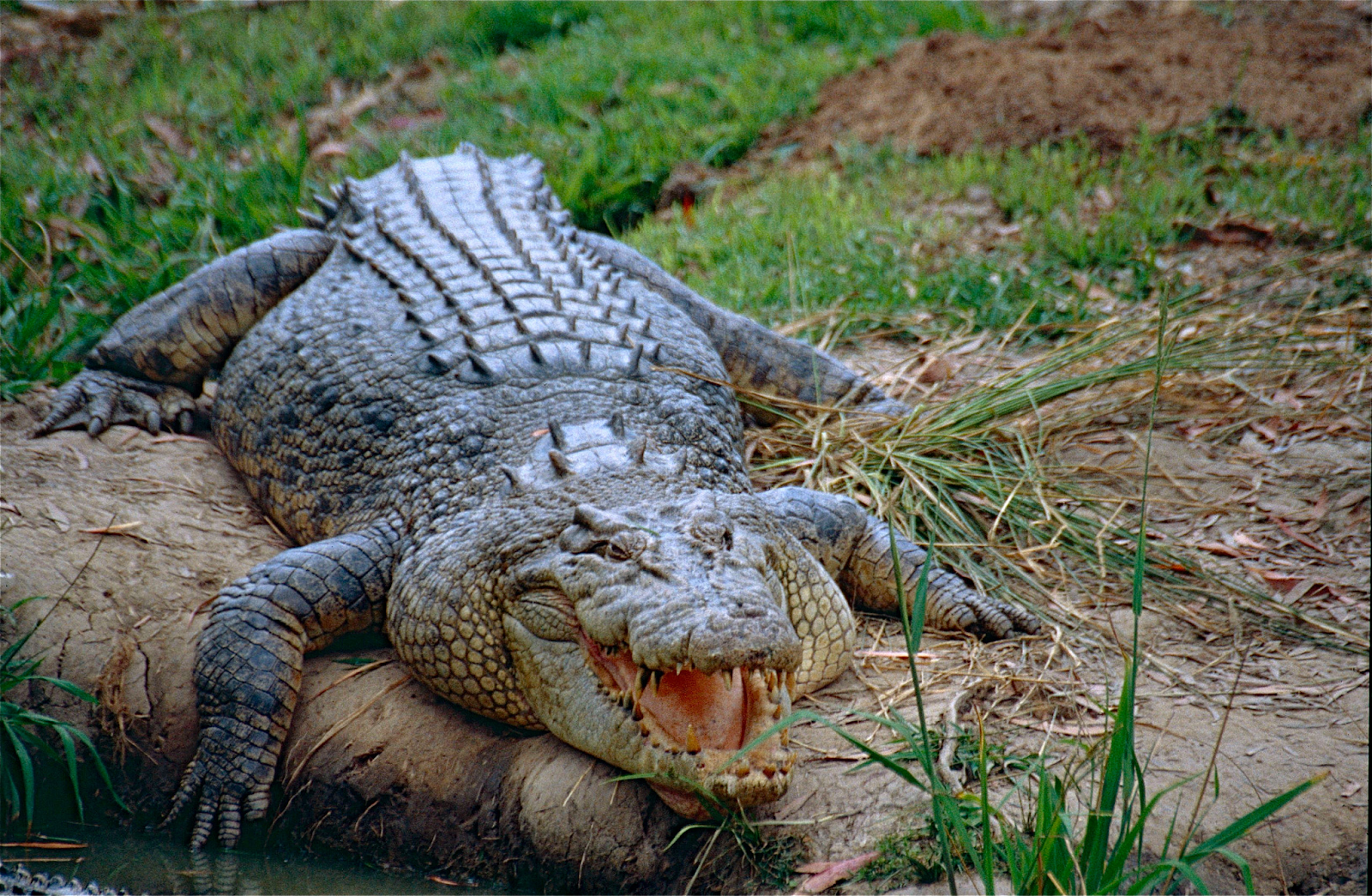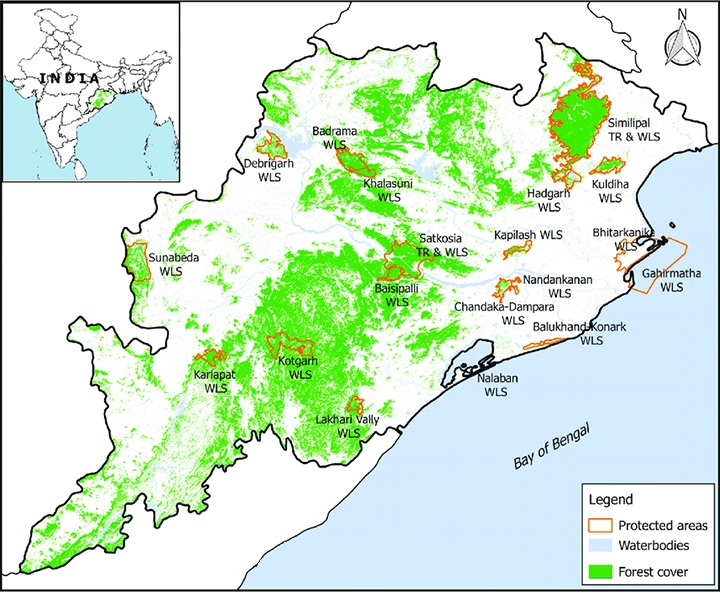Important Facts For Prelims
Marginal Rise in Saltwater Crocodile Population in Bhitarkanika
- 19 Jan 2024
- 3 min read
Why in News?
Bhitarkanika National Park in Odisha, renowned for its diverse ecosystem, has observed a slight increase in the population of saltwater crocodiles (Crocodylus porosus) during the annual census in 2024.
What are the Key Points Related to Salt-water Crocodiles?
- About: The saltwater crocodile is the largest of all crocodilians, and the largest reptile in the world.
- Female saltwater crocodiles are smaller in size than their male counterparts, normally reaching a maximum length of 2.5 to 3 m.
- They tolerate salinity and are found mostly in coastal waters or near rivers. They are also found in freshwater near rivers and swamps.
- Communication: Saltwater crocodiles communicate using several sounds, including barking, hissing, growling and chirps.
- Distribution: Tropical to warm temperate latitudes in the eastern Indian and western Pacific oceans.
- Habitat: Mangrove forests and other coastal habitats
- Prey: Saltwater crocodiles have a variety of prey. Juveniles are restricted to small insects, amphibians, reptiles, crustaceans, and small fish.
- Adults feed on crabs, turtles, snakes, birds, buffalo, wild boar, and monkeys.
- Saltwater crocodiles hide in the water exposing only their eyes and nose. They lunge at prey, often killing it with a single snap of the jaws, then drag the prey under water where it is more easily consumed.
- Conservation Status:
- IUCN Red list : Least Concern
- WPA, 1972: Schedule I
- CITES : Appendix I/II
Note
Bhitarkanika is the second-largest mangrove forest in India after the Sundarbans in West Bengal. Both areas are among the three strongholds of saltwater crocodiles, the third being the Andaman and Nicobar Islands.
What are the Key Facts about Bhitarkanika National Park (NP)?
- The Bhitarkanika NP is essentially a network of creeks and canals which are inundated with waters from rivers Brahmani, Baitarani, Dhamra and Patasala forming a unique ecosystem.
- The Gahirmatha Beach which forms the boundary of the sanctuary in the east is the largest colony of the Olive Ridley Sea Turtles.
- A unique phenomenon observed in this NP is the Bagagahana or the heronry near Surajpore creek.
- Thousands of birds colonise the creek for nesting and the aerial acrobatics performed prior to the mating makes for an impressive sight.
- Bhitarkanika is also home to eight varieties of Kingfisher birds which is also a rarity.








